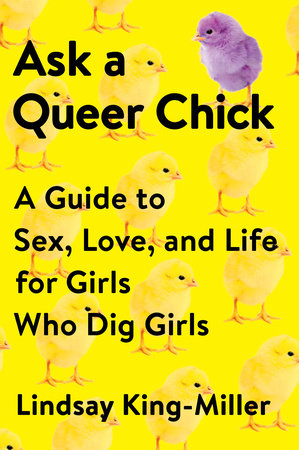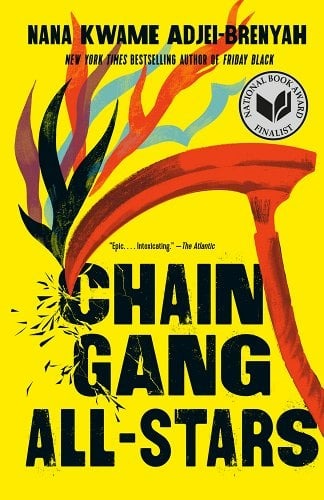This month I read Folly by Maureen Brady, an extremely interesting working class lesbian book published in 1982. Folly is set in a small factory town and follows several women as they struggle to reconcile their desires for a better life with the reality of their jobs and lives. The title character, Folly, works with several area women, including her best friend and eventual lover Martha, to organize a factory strike after a woman is arrested after the death of her baby due to their lack of sick leave. Meanwhile Lenore, a recent high school drop-out, misses her girlfriend, who has gone to work on the Alaskan pipeline, and struggles to find community and meaning in her small town life. I found Folly to be incredibly engaging and self-aware, and I frankly can’t believe I haven’t heard of it spoken of it before either in a feminist/working class literature context or in a queer lit context. And as someone who grew up in a very small town – although not quite as small as Victory – a lot of the themes and internal struggles the characters faced struck very true for me, and of course it is very easy to get behind women fighting for better conditions.
One thing I really loved about Folly is that it shows multiple generations of women having relationships and discovering their sexualities in a variety of ways. Martha and Folly are middle-aged factory workers and best friends. They live next to each other, deal with all of their problems together, and constantly lean on each other for support. Folly is generally supportive and willing to live and let live at first, but it takes her a while to apply to concept of queerness to herself. When she finally does, she embraces it and works eagerly to incorporate her new knowledge about herself into her life, which was something I found personally very relatable. Meanwhile in the younger generation, Lenore works at the local butcher counter and misses her girlfriend, who is working on an Alaskan pipeline. Lenore is secure in her own sexuality, but is continually looking for some sort of community. She befriends Mary Lou, Folly’s daughter, who is going through the usual teenage growing pains but also finding she is not much interested in what the local boys want to get up to on dates. She is intrigued by Lenore’s independence, and, later, wants to know more so she can come to terms both with herself and with her mother’s changing decisions and priorities. I really enjoyed seeing different queer women in different stages of their lives interacting in a small town setting. Despite all the hardships they go through, they find strength and growth in their relationships with each other, and it was really joyful for me to read that.
Another important thing I enjoyed about Folly is that it closely examines white women discovering their own biases and privileges. Folly doesn’t give much thought to the larger picture of things until she convinces Martha to back her up in calling for a strike. When Emily, a black factory worker, stands up with her, first for a reduced production rate, and then on the call for the strike, Folly slowly realizes how important it is to expand her worldview and be inclusive in her organizing. Throughout the book, she continues to listen to black organizers, learn from their viewpoints, and have empathy for others. Meanwhile, Lenore is lonely and makes friends with Sabrina, a server at the diner who is black. As she gets to know Sabrina, she has to become aware of and confront her own internal biases and the realities of interracial relationships in a town that is essentially segregated and has a Klan presence. The frank way the book approaches Folly’s growth in organizing and Lenore’s slow eye-opening to how she’s benefited from and lived under the town’s racism makes a powerful impact and can be summed up with how Folly explains to Mary Lou that “A lot of life is following one habit into the next. You got to stop yourself and peel your eyes open all the time if you want to see what goes on.” I really, deeply enjoyed how the book looked at this head-on, and had the characters really spend time thinking and reacting and changing.
The last important thing about Folly is that it is always pushing for a better future. Folly and Martha always have dreams for their futures, the women in the factory organize around their own needs and principals, and they are constantly seeking to learn, grow, and build relationships. Folly and Mabel don’t just trust the union’s goals – they recognize that the union rep looks a lot more like factory ownership than them, and doesn’t have their same priorities. Folly is constantly pushing for more goals and more progress, and doesn’t like the idea of compromising on what they want. Lenore could sink into her life of her job and her own little apartment and writing letters to her girlfriend, but she wants more than that and continually seeks out new community. The women of Folly are intimately aware of how to survive in the world they live in, but they want to work for more, and that’s very important to read.
In conclusion, Folly is a very enjoyable novel about working-class lesbians trying to build their own community and sticking up for themselves and their fellow workers to factory management. It deftly handles themes of labor relations, race, and sexuality while maintaining a positive and hopeful outlook. It moves between generations, is self-aware, and is, in general, a really gripping read. I definitely recommend tracking down a copy!




